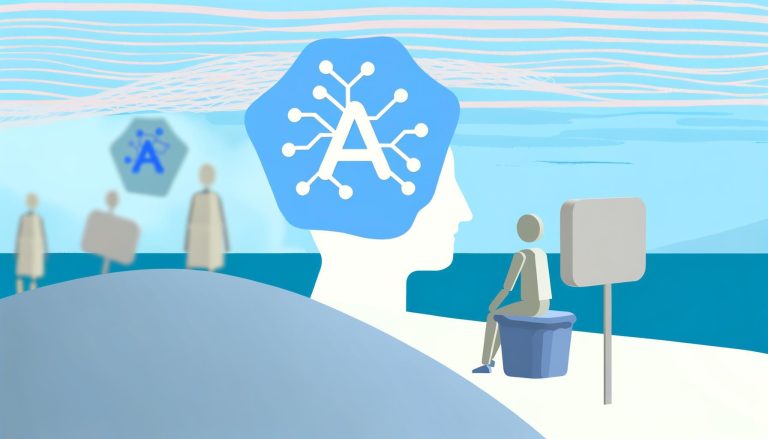In today’s fast-paced world, integrating meditation into our daily lives is becoming increasingly important for maintaining mental health and achieving deep relaxation. Thanks to advancements in artificial intelligence (AI), the realm of meditation has seen significant innovation. AI-guided meditation techniques are revolutionizing how individuals experience relaxation by providing personalized and adaptive approaches. In this article, we’ll explore what AI-guided meditation is, the techniques it employs, its benefits, and practical tips to get started.
What is AI-Guided Meditation?
AI-guided meditation utilizes artificial intelligence to create customized meditation experiences based on individual needs, preferences, and real-time feedback. Through data analysis and machine learning algorithms, AI can enhance traditional meditation practices by offering a more personalized and impactful session.
Popular AI-Guided Meditation Techniques
AI-guided meditation incorporates various techniques to help individuals achieve deep relaxation. Here are some of the most popular methods:
1. Personalized Meditation Programs
AI can analyze user data, such as stress levels, sleep patterns, and personal preferences, to create meditation programs tailored specifically to an individual’s needs. These programs can adapt over time, ensuring the meditation experience remains relevant and effective.
2. Real-Time Adaptive Feedback
Using sensors and wearable devices, AI can monitor physiological signals like heart rate, breathing patterns, and brainwave activity. By analyzing this data in real-time, the AI can provide immediate feedback, adjusting the meditation session to better suit the user’s current state.
3. Voice-Guided Meditation
AI-powered voice assistants, such as Google Assistant or Amazon Alexa, can guide users through meditation sessions. These voice-guided meditations can be customized to focus on specific goals, such as stress reduction, improved sleep, or emotional regulation.
4. Visual and Audio Enhancements
AI can enhance traditional meditation practices by incorporating immersive visual and audio elements. For example, virtual reality (VR) environments or binaural beats can be used to create a more engaging and relaxing experience.
5. Chatbot Assistance
AI chatbots can interact with users to offer meditation tips, answer questions, and provide encouragement. This ongoing support can help users stay motivated and consistent in their meditation practice.
Benefits of AI-Guided Meditation
AI-guided meditation offers numerous benefits that can enhance an individual’s mental and physical well-being:
- Customization: Tailored meditation programs based on individual needs and preferences.
- Accessibility: With AI, meditation can be easily integrated into daily activities through smartphones, wearables, and voice assistants.
- Flexibility: AI meditation can be practiced anywhere and anytime, accommodating busy schedules.
- Real-Time Feedback: Immediate adjustments based on real-time physiological data enhance the effectiveness of each session.
- Enhanced Engagement: Interactive and immersive elements keep users engaged and motivated.
- Consistency: AI reminds and encourages regular practice, helping to build and maintain a meditation habit.
Practical Tips for Getting Started with AI-Guided Meditation
If you’re new to AI-guided meditation, here are some practical tips to get you started:
1. Choose the Right App or Device
Many AI-guided meditation apps and devices are available, so selecting one that suits your needs and preferences is essential. Look for an app or device with positive reviews, user-friendly interfaces, and features that align with your meditation goals.
2. Set Clear Goals
Before starting your AI-guided meditation practice, set clear and realistic goals. Whether it’s reducing stress, improving sleep, or enhancing focus, having specific objectives will help the AI provide more tailored and effective guidance.
3. Create a Comfortable Environment
Creating a calm and comfortable environment is crucial for a successful meditation session. Find a quiet space, dim the lights, and ensure you are seated or lying down in a comfortable position.
4. Be Consistent
Consistency is key to reaping the benefits of meditation. Schedule regular meditation sessions, even if they are short, and try to make them a part of your daily routine.
5. Be Open to Feedback
AI-guided meditation often involves real-time feedback and adjustments. Be open to these changes and trust the process, as the AI’s goal is to enhance your meditation experience.
6. Track Your Progress
Most AI-guided meditation apps offer progress tracking features. Use these tools to monitor your improvements, identify patterns, and stay motivated on your meditation journey.
Conclusion
AI-guided meditation is a groundbreaking approach that combines technology with ancient mindfulness practices to offer personalized, adaptive, and engaging meditation sessions. By utilizing AI, individuals can achieve deeper relaxation, reduce stress, and improve overall well-being more effectively. Whether you’re a meditation novice or a seasoned practitioner, incorporating AI-guided techniques can bring your meditation practice to new levels of effectiveness and enjoyment.
If you’re looking to integrate AI-guided meditation into your routine, consider exploring the various apps and devices available. Remember to set clear goals, remain consistent, and create a comfortable environment to maximize the benefits of your meditation practice. Happy meditating!





